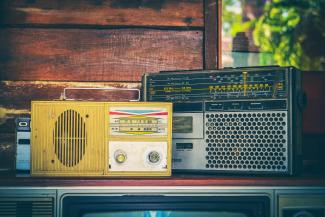
- Nationwide survey conducted by SMU on perceptions of radio consumption revealed that the radio beats the TV six times over with a very significant 86% of consumers in Singapore turning to the radio for music
- Yet more than 76% households have nobody to less than half of the family listening to the radio, due to the availability of customised online music listening, and sheer lack of interest in the radio
13 December 2022 (Tuesday), Singapore – In Singapore, where the TV is the go-to for an average of 80.33% of consumers for entertainment and news, it is music where the radio whips the TV, beating the TV six times over with a very significant 86% who turn to the radio for music.
Yet more than 76% households have nobody to less than half of the family listening to the radio. This means that with Singapore’s average resident household size of 3.15 persons, zero to one person listens to the radio. A study conducted by the Singapore Management University (SMU) revealed these perceptions of radio consumption.
The principal reason for this is the availability of customised online music listening through channels like Spotify and YouTube, followed by sheer lack of interest in the radio.
SMU Principal Lecturer of Statistics, Rosie Ching, created and carried out the nation-wide study with 158 students from August to November this year, interviewing 7,015 people across Singapore through face-to-face interviews, telephone calls and online, adhering closely to Singapore demographics in gender and race.
Code-named Do.Re.Mi, this student study delved into people’s current tastes in radio listening. Despite our tech-savvy nation, an overwhelming majority of 77% still listen to conventional bedside, tabletop or vehicle radios. Even for those who subscribe to streaming radio, 60% rate their listenership at less than half the time compared to listening through conventional means.
Even in the pandemic with many staying home, 76% indicated that their volume of radio-listening has stayed largely unchanged, with a rise in listenership by 13.14%.
70% think radio content like in music overlaps excessively amongst radio stations, with too many radio advertisements. Gen X forms the biggest slice of radio listeners in Singapore at 76.67% who have listened to the radio in the past year, higher than all other ages. The Malay population evince the highest affinity for the radio, followed by the Chinese, but all races and age groups have very low affinity for radio listening, especially the baby-boomers and Gen Z. More than 50% of radio listening takes place in the 6-10 AM time slot, with almost 90% tuned in for mainly less than 1 hour to up to 3 hours.
Almost half of Singaporeans listen to the radio chiefly for music, with a quarter saying the radio for them acts primarily as background accompaniment. Yet they still have chosen “more music and entertainment with competitions and rewards” as the most effective means to boost radio listenership in Singapore, with a lowly 6% choosing news and current affairs.
The survey also found that more than 75% of Singaporeans prefer listening to a “live” DJ on air than without a “live” DJ and say that watching or engaging DJs on social media is no better than just listening to them at work on air. The top radio stations ranked Number One amongst listeners are: 987, KISS92 and YES933.
Said Ms. Rosie Ching, “The world knew the legendary Marilyn Monroe listened to radio when she cooed, “It's not true I had nothing on, I had the radio on.” The radio is a worldwide instrument of extraordinary versatility, a staple and often a constant in many childhoods, adolescences, adulthoods. To delve into its current status in society, I did this study with the support of the Voice of Singapore Mr. William Xavier, to statistically examine how we regard and use the radio in 21st-century Singapore.”